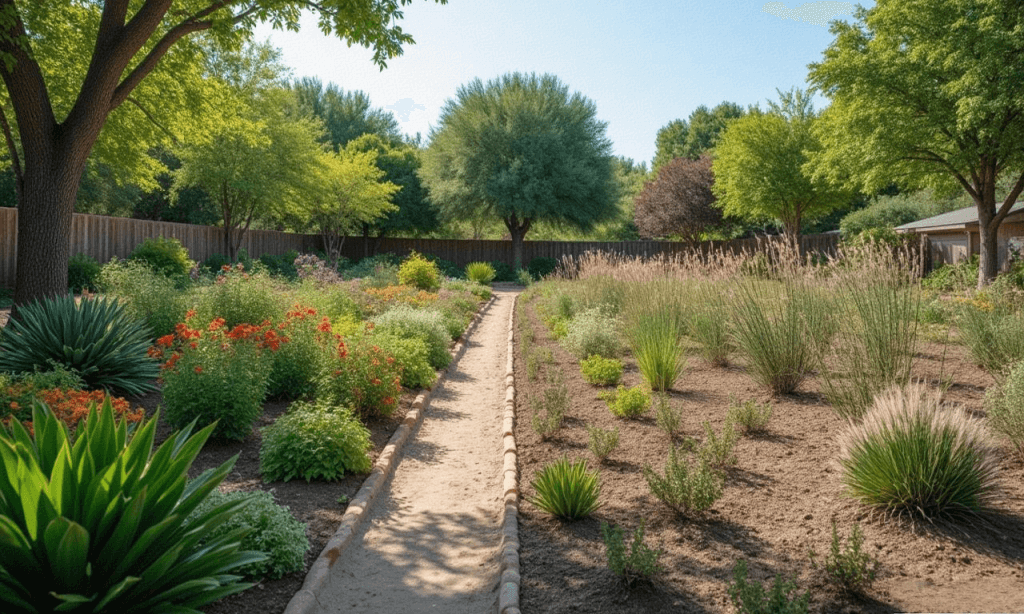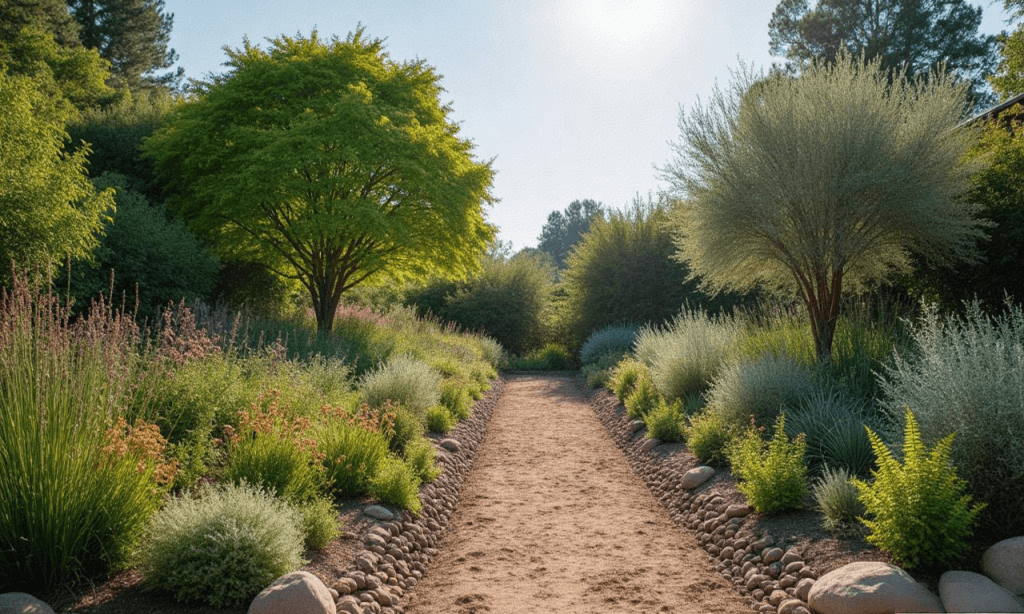5 Native Texas Plants That Thrive in Full Sun (Low Maintenance!)
Introduction: The Smart Way to Texas-Proof Your Landscape
Texas gardeners face a unique challenge: creating beautiful outdoor spaces that can survive 100°F summers, unpredictable droughts, and clay-heavy soils. The solution? Native plants that have evolved over centuries to thrive in these exact conditions. According to Texas A&M AgriLife Research, landscapes using native plants require 75% less water and 90% less maintenance than traditional gardens.
This guide reveals:
- Top 5 bulletproof native plants for full sun areas
- Scientific benefits of native landscaping
- Region-specific growing tips from the Panhandle to the Gulf Coast
- Real water savings you can expect
Whether you're xeriscaping in Austin or creating a pollinator garden in Dallas, these native superstars will transform your outdoor space.
1. Texas Sage (Leucophyllum frutescens) - The Drought Warrior
Why It Thrives
- Survives on just 12" rainfall/year (USDA data)
- Blooms within days after rain - nature's moisture indicator
- Silver foliage reflects Texas sun to prevent scorching
Growing Tips
- Plant spacing: 4-6 feet apart
- Pruning: Only after flowering to maintain shape
- Personal favorite: 'Green Cloud' variety for darker foliage
Case Study: A San Antonio homeowner replaced thirsty hibiscus with Texas sage and cut water bills by $80/month.
2. Blackfoot Daisy (Melampodium leucanthum) - The Tough Bloomer
Unmatched Durability
- Flowers 9 months/year (March-November)
- Thrives in poor soils where grass won't grow
- Deer and rabbit resistant
Care Secrets
- No fertilizer needed - thrives on neglect
- Deadheading optional - self-cleaning flowers
- Perfect for: Rock gardens, borders, parking strips
"A 2023 Lady Bird Johnson Wildflower Center study found Blackfoot Daisy attracts 23 native pollinator species"
3. Yucca (Yucca spp.) - The Architectural Statement
Texas-Tough Features
- Stores water in thick leaves for drought survival
- Flower spikes reach 8' tall - dramatic summer display
- Zone range: 5-11 (grows statewide)
Planting Tips
- Wear gloves - leaf tips are sharp
- Best varieties:Twistleaf Yucca (Central TX)Red Yucca (South TX)Adam's Needle (North TX)
Regional Tip: In West Texas, pair with decorative gravel for desert aesthetic.
4. Gulf Coast Muhly Grass (Muhlenbergia capillaris) - The Showstopper
Seasonal Interest
- Summer: Green fountain-like clumps
- Fall: Pink/purple cloud blooms
- Winter: Golden tan structure
Landscape Uses
- Mass plantings for dramatic effect
- Erosion control on slopes
- Privacy screening (grows 3-5' tall)
Maintenance: Cut back to 6" in late winter
5. Turk's Cap (Malvaviscus arboreus) - The Hummingbird Magnet
Shade-Tolerant Native
- Blooms in full sun to full shade
- Red flowers resemble Turkish turbans
- Fruits attract wildlife
Care Guide
- Water: Weekly first year, then drought-tolerant
- Pruning: Can shape as small tree
- Bonus: Leaves make edible tea
Case Study: A Houston gardener recorded 47 hummingbird visits/day to a single Turk's Cap plant.
The Science Behind Native Plant Benefits
Water Conservation
- Root systems reach 10-15' deep (Texas Water Development Board)
- Leaf adaptations reduce transpiration
- Average savings: 55 gallons/week per 100 sq ft
Wildlife Support
- Host plants for 14x more butterfly species
- Berries/seeds feed native birds
- Shelter for small mammals
5-Step Planting Guide for Success
- Soil Prep: Amend clay with 3" compost
- Planting Time: Fall or early spring
- Spacing: Follow mature size (no overcrowding)
- Watering: Deep soak 1x/week first season
- Mulch: 2" native hardwood mulch
Pro Tip: Group plants by water needs for easier maintenance.
Common Mistakes to Avoid
- Overwatering (causes root rot)
- Over-fertilizing (reduces drought tolerance)
- Wrong plant placement (check sun requirements)
- Using non-native mulch (can introduce pests)
- Pruning at wrong time (removes flowers)
Personal Recommendation: I always hand-water new plants instead of using sprinklers for better establishment.
Final Thoughts: Work With Nature, Not Against It
Native Texas plants offer stunning beauty without the struggle. By choosing these adapted species, you'll:
- Save thousands of gallons of water
- Eliminate constant maintenance
- Create habitat for wildlife
- Enjoy year-round interest
As Austin's Watershed Protection Department reports, converting just 25% of lawn to natives can reduce outdoor water use by 40%.
Ready to transform your landscape? These five natives are your ticket to a gorgeous, low-maintenance Texas garden!
Disclaimer
Results may vary based on soil conditions and microclimates. Always verify plant suitability for your specific area. AI-generated images are illustrative only.
Sources Cited:
- Texas A&M AgriLife Extension Research
- Lady Bird Johnson Wildflower Center Studies
- USDA Native Plant Database
- Texas Water Development Board Conservation Data
haley
|
2025.04.23






